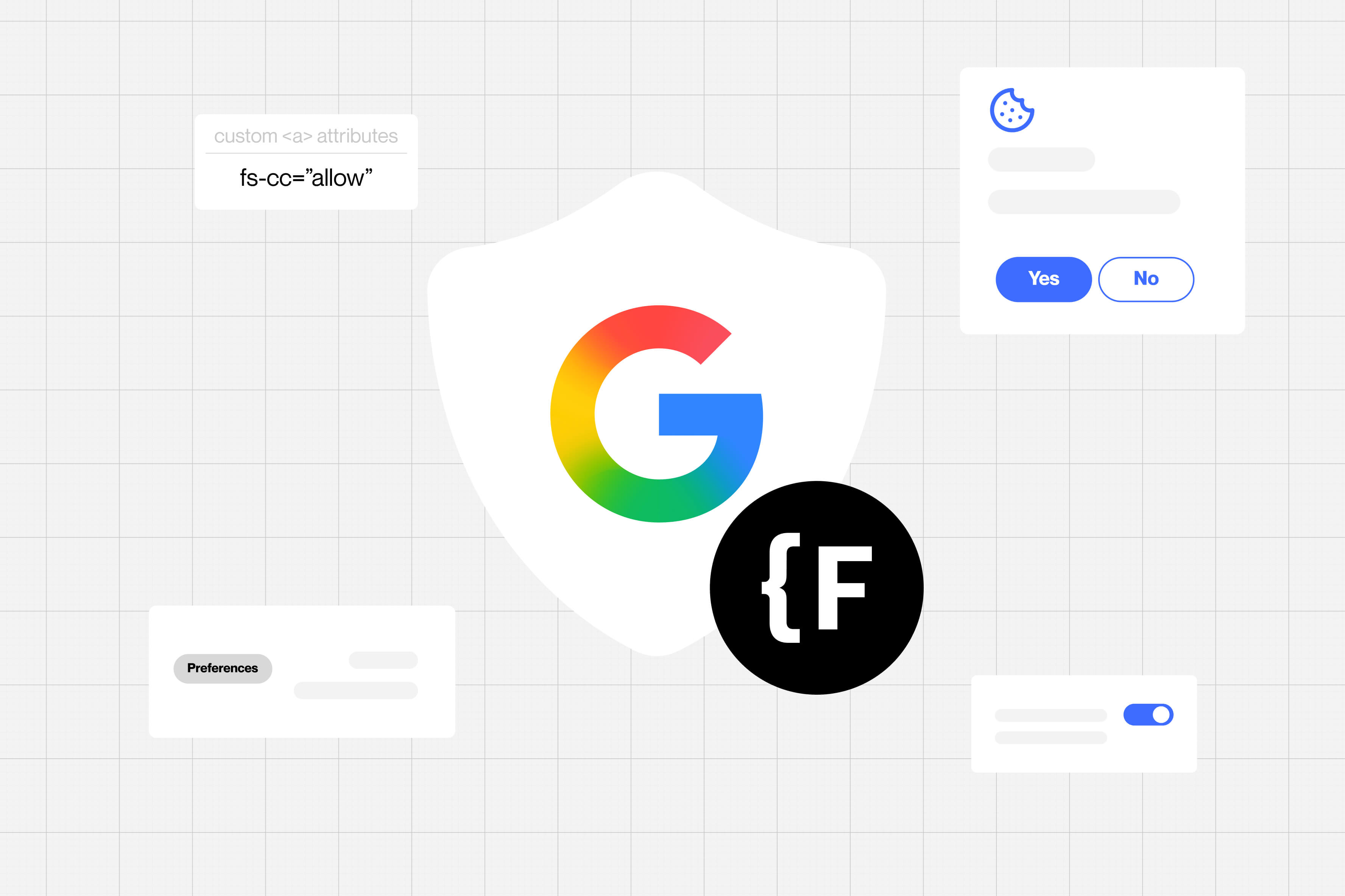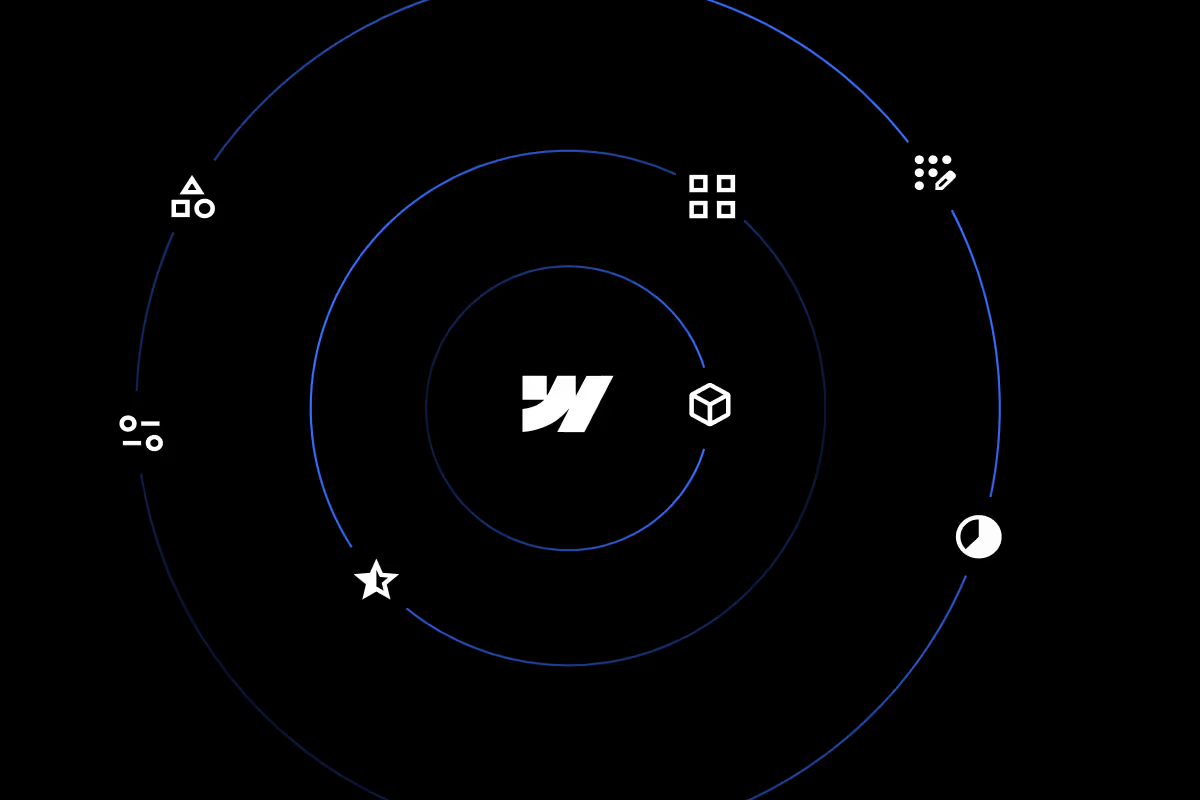Best CMS for SEO: Choose the right tool for rankings, speed, and AI visibility

Key takeaways
- Your CMS directly affects how search engines and AI assistants read your site, from speed and Core Web Vitals to how easily you can add schema and structured data.
- Different platforms prioritise different strengths. Some focus on design freedom, others on plugin ecosystems, ecommerce tools, or publishing speed.
- New AI features are appearing across CMS platforms, making it easier to generate content, metadata, and even design elements without extra plugins.
- By the end of this guide, you will know how the most popular CMS options stack up and what to check before migrating or choosing a new one.
Picking a CMS matters more than most people realise. It affects the code your site outputs, how quickly pages load, and how easily your team can publish SEO-friendly content. This guide cuts through the vendor noise and focuses on what actually drives results: technical control, speed, and content workflow.
We compared 7 top CMS tools, weighed their pros and cons, and compared their SEO capabilities so that you can find the best CMS for your business.
But before we get to these tools, let’s understand why you should even bother taking out the time to choose the right CMS tool.
Why CMS choice matters for SEO
Your CMS does more than let you publish pages. It shapes the technical output of your site, how quickly pages load, and how easily your team can create content that search engines and AI assistants understand. Pick the wrong tool and you’ll spend weeks fighting URL structures, slow page speeds, or missing structured data. Pick the right one, and many SEO tasks become straightforward.
Here are the core ways a CMS affects SEO:
- Technical output and control: The CMS determines the HTML it generates, how canonical tags are handled, and whether you can control meta tags and robots rules per page. Clean, predictable output makes it easier for search engines to crawl and index your content.
- Speed and hosting: Hosting, caching, and how the CMS serves assets affect page load times and Core Web Vitals. Faster sites rank better and keep users on the page longer.
- Content workflow and publishing speed: How easy it is for non-technical people to add, edit, and preview content matters. A CMS that supports templates, previewing, and scheduled publishing reduces errors and helps keep content fresh.
- Structured data and AI visibility: The CMS should enable you to add schema markup and structured content without resorting to hacks. That helps with rich results and makes your content more likely to be cited by AI assistants.
- Extensibility and developer overhead: Plugins, integrations, or APIs matter when you need custom features. Some systems offer one-click options, while others require code to be entered. Consider how much developer time you can afford.
- Migration and long-term maintenance: If moving between systems is hard, SEO value can get lost. Plan redirects, URL mapping, and content exports before you change platforms.
Top 7 Best CMS for SEO, And Where They Work Best
1) Webflow
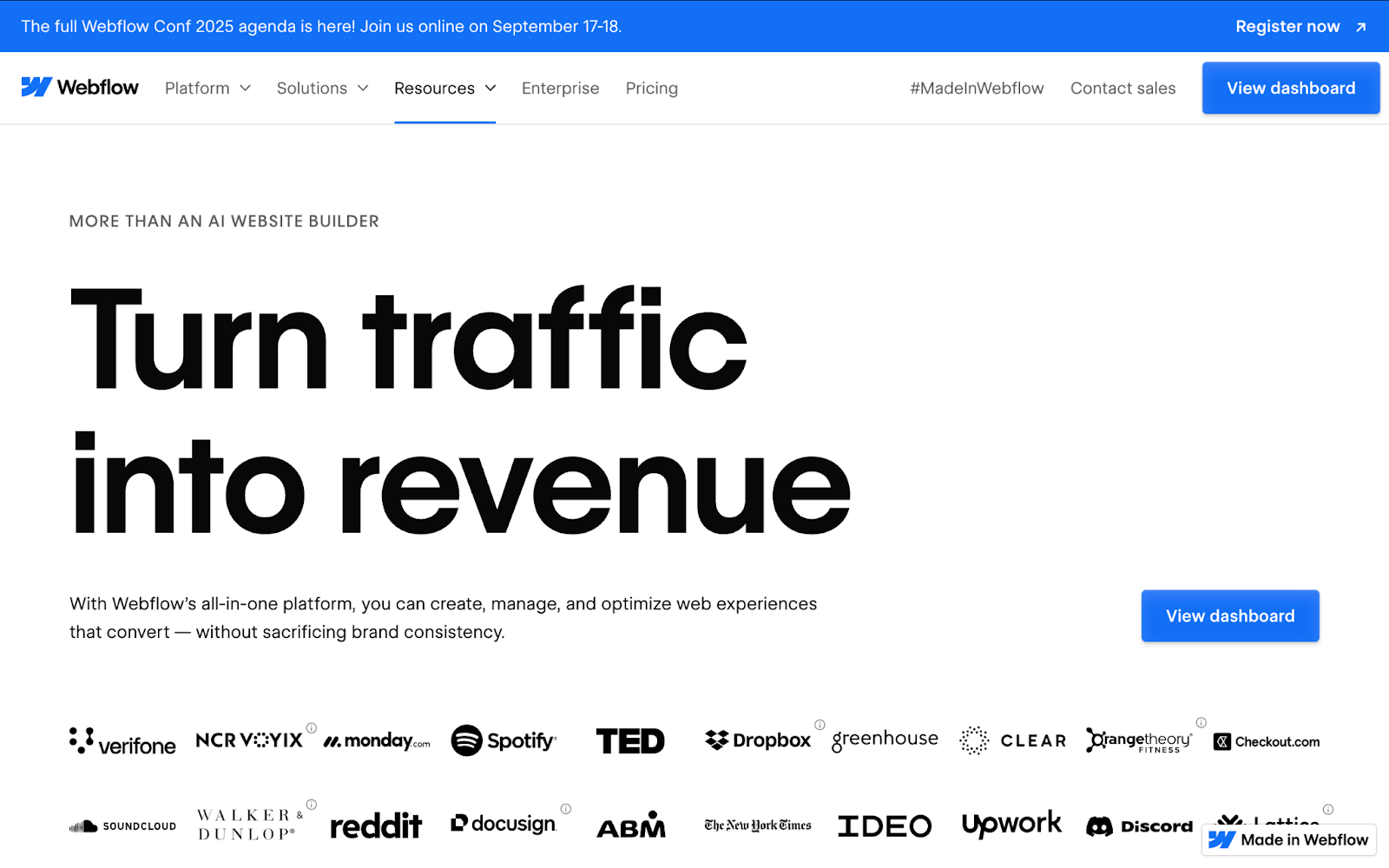
Webflow is named a leader in 46 G2 summer reports, including core categories like web content management, website builder, web design, and web hosting platforms.
Webflow offers a visual, design-first CMS that outputs clean, semantic HTML and serves sites on a global edge network with CDN-backed hosting and modern HTTP/2/3 support. As of this year, Webflow is used on roughly 0.9% of all websites, which is a small but fast-growing share among design-forward marketing sites.
Pros
- Predictable markup and native SEO controls such as editable meta fields, canonical settings, and an auto-generated sitemap.
- Global CDN and reliable hosting that simplifies performance work
- Editor-friendly Collections and templates let non-devs publish safely.
Cons
- Smaller native plugin ecosystem compared with WordPress; some advanced automations need integrations or custom code.
- Not built for extremely large publishing networks without custom engineering.
Pricing
CMS plans start at $29/month billed annually. Business and Enterprise plans scale up with higher traffic and support.
2) WordPress

WordPress is the largest CMS on the web and powers about 43.4% of all websites, which explains its huge ecosystem of plugins, themes, and hosting providers.
Pros
- Extremely large plugin and developer ecosystem for SEO features such as sitemaps, schema, redirects, and editorial tooling.
- Flexible content modelling for publishers and large editorial teams.
- Many managed hosting options that can scale performance.
Cons
- Performance and security depend on hosting and plugin hygiene.
- Ongoing maintenance for PHP, themes, and plugins.
- Plugin conflicts can cause unexpected issues.
Pricing
Core is free. Managed WordPress hosting ranges from $20–$60/month for small businesses, with enterprise setups running much higher.
3) HubSpot CMS
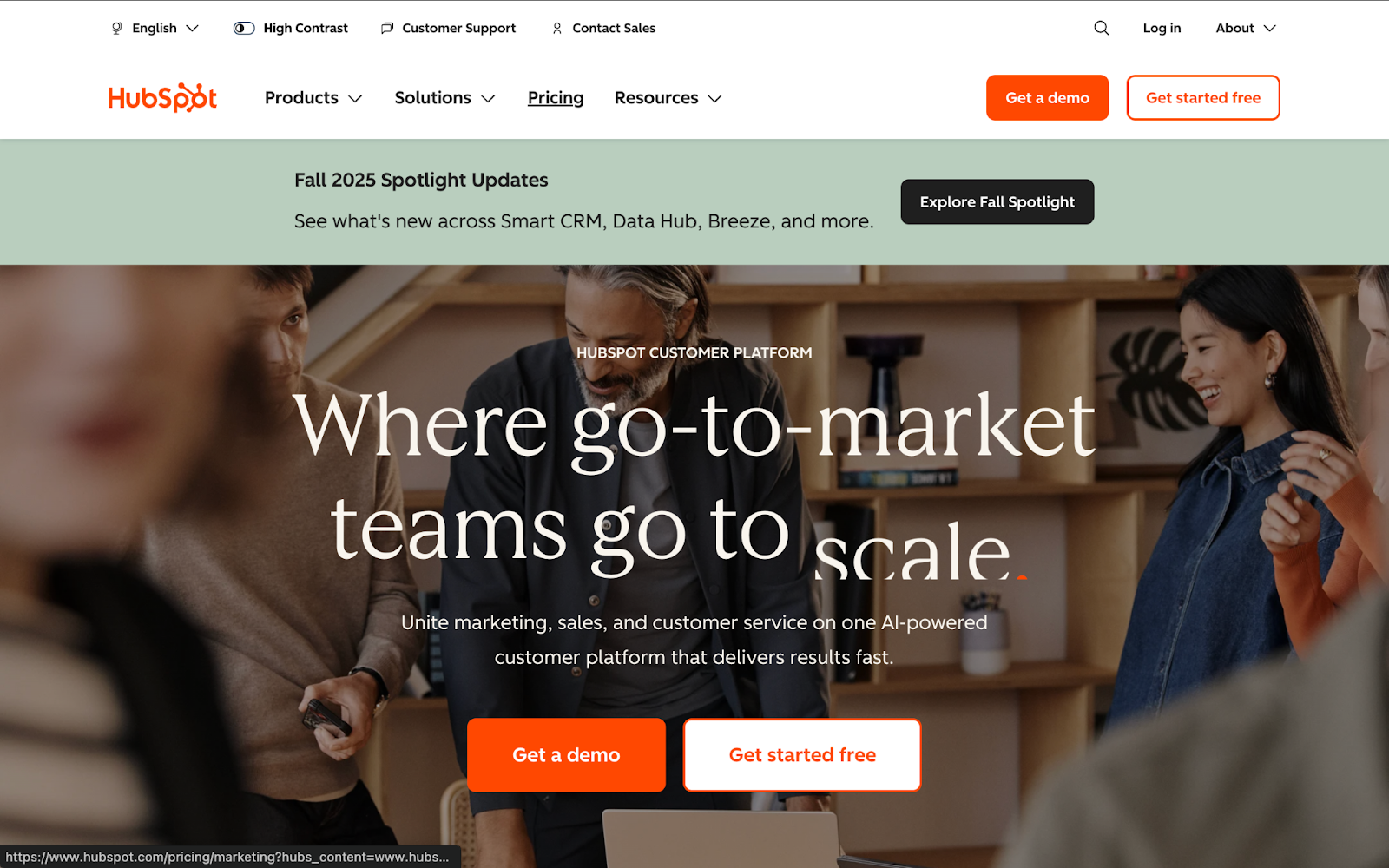
HubSpot CMS bundles content with marketing automation and CRM. HubSpot reports over 258,000 customers, which helps explain why many businesses pick it when they want site and marketing data tightly integrated.
Pros
- Native marketing and attribution tools that make content to lead tracking straightforward.
- Template modules that support server-side rendering and structured data.
Cons
- Higher cost compared with commodity CMS platforms.
- Vendor lock-in if you later want to move parts of the stack.
Pricing
Starts at $25/month for CMS Starter. Professional and Enterprise tiers can reach $400–$1,200/month, often bundled with HubSpot Marketing Hub.
4) Headless CMS (Contentful, Sanity, Strapi, etc.)
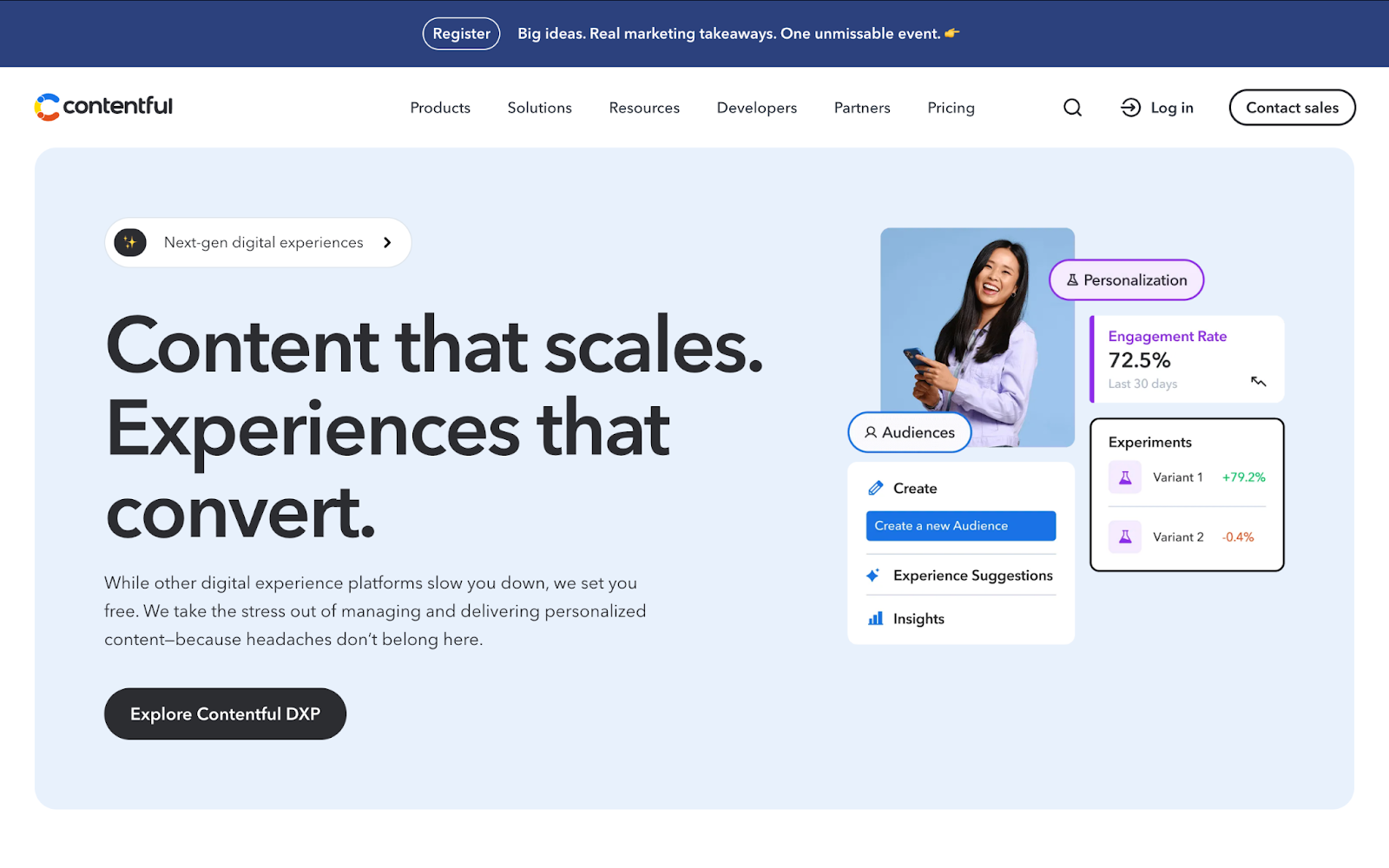
Headless platforms separate content from presentation, so teams control the frontend fully. Industry research shows strong headless adoption: some reports find that roughly seven in ten organisations surveyed have adopted headless architecture or are actively evaluating it. That’s why many teams pick headless when they need full control over HTML, schema, and caching.
Pros
- Full control over the frontend makes it possible to deliver server-side rendering or static builds that nail SEO markup and speed.
- Great for multi-channel publishing and complex content models.
Cons
- Requires engineering to implement and maintain the frontend, build pipeline, and edge caching.
- More moving parts to monitor and secure.
Pricing
- Contentful: free tier, then $300/month for teams.
- Sanity: free developer plan, paid plans from $99/month.
- Strapi: open-source core; paid cloud hosting from $29/month.
5) Shopify

Shopify is an ecommerce-first platform used by millions of stores. Recent industry figures report about 4.8 million active Shopify stores, which is why Shopify is common for product-focused SEO and built-in product schema.
Pros
- Native support for product schema and ecommerce metadata, which helps product-rich results.
- Fast time-to-market for stores and a rich app ecosystem for e-commerce needs.
Cons
- URL structure and canonical behaviour can be constrained for very large catalogs.
- Advanced SEO customisations sometimes require Liquid edits or third-party apps.
Pricing
Plans start at $39/month (Basic) and scale to $399/month (Advanced). Shopify Plus (enterprise) starts at around $2,000/month.
6. Wix Studio

Wix Studio is the Wix’s new professional-grade platform, launched to give agencies and advanced users more design flexibility, scalability, and control than the traditional Wix builder. It’s still hosted and managed by Wix, but offers custom breakpoints, grid-based responsive design, and deeper collaboration tools. For SEO, Wix Studio inherits Wix’s automatic sitemap, SSL, and schema defaults, while layering in more design and workflow control.
Pros
- Advanced responsive design controls with custom breakpoints.
- Built-in hosting, CDN, and security handled by Wix.
- Automatic sitemaps, SSL, and structured data support.
- Collaborative tools that make it easier for teams and agencies to work together.
Cons
- Still less server-side and technical flexibility than open-source CMSes.
- Customisation beyond design (advanced SEO hacks or integrations) can be limited compared with Webflow or headless systems.
- Platform lock-in: moving away from Wix Studio means rebuilding elsewhere.
Pricing
Wix Studio is currently priced as part of Wix’s premium tiers. Individual site plans start around $16/month, while business/ecommerce features begin at $27/month. Agency and Studio pricing scales based on client management features and volume.
7) Ghost

Ghost is a publishing-focused CMS designed for speed and subscriptions. W3Techs reports Ghost at around 0.1% market share, reflecting a smaller but focused user base of publishers and membership sites. Ghost includes built-in JSON-LD and sitemap generation.
Pros
- Fast by default with built-in structured data and a writing-first editorial experience.
- Low maintenance for core publishing features.
Cons
- Fewer built-in marketing automation integrations than larger platforms.
- For membership or advanced funnels, additional tools are usually required.
Pricing
Ghost(Pro) hosted plans start at $15/month and scale with traffic.
Quick comparison table scannable at a glance
FAQ
Yes, Webflow includes built-in SEO tools such as customizable meta titles, descriptions, alt text for images, and automatic sitemap generation. The platform’s clean code and fast loading times also contribute to better SEO performance. Webflow’s hosting on AWS ensures reliability and speed, which are critical factors for SEO.
For many marketing sites, yes. WordPress still leads in plugins and flexibility, but Webflow’s cleaner code, built-in SEO controls, and lower maintenance often make it the better choice for fast, reliable SEO.
Yes. Hosting fixes speed, but the CMS determines URL structure, schema support, and how easily your team can maintain SEO day to day.
Only if implemented poorly. With server-side rendering or static builds, headless setups can be some of the fastest and most SEO-friendly. Without those, indexing can break.
Shopify is strongest out of the box for e-commerce SEO, thanks to built-in product schema. WordPress + WooCommerce and headless commerce setups can provide more flexibility at scale.
Webflow, Wix Studio, and HubSpot make it simplest for non-devs to handle meta tags, alt text, and canonicals directly in the editor.
